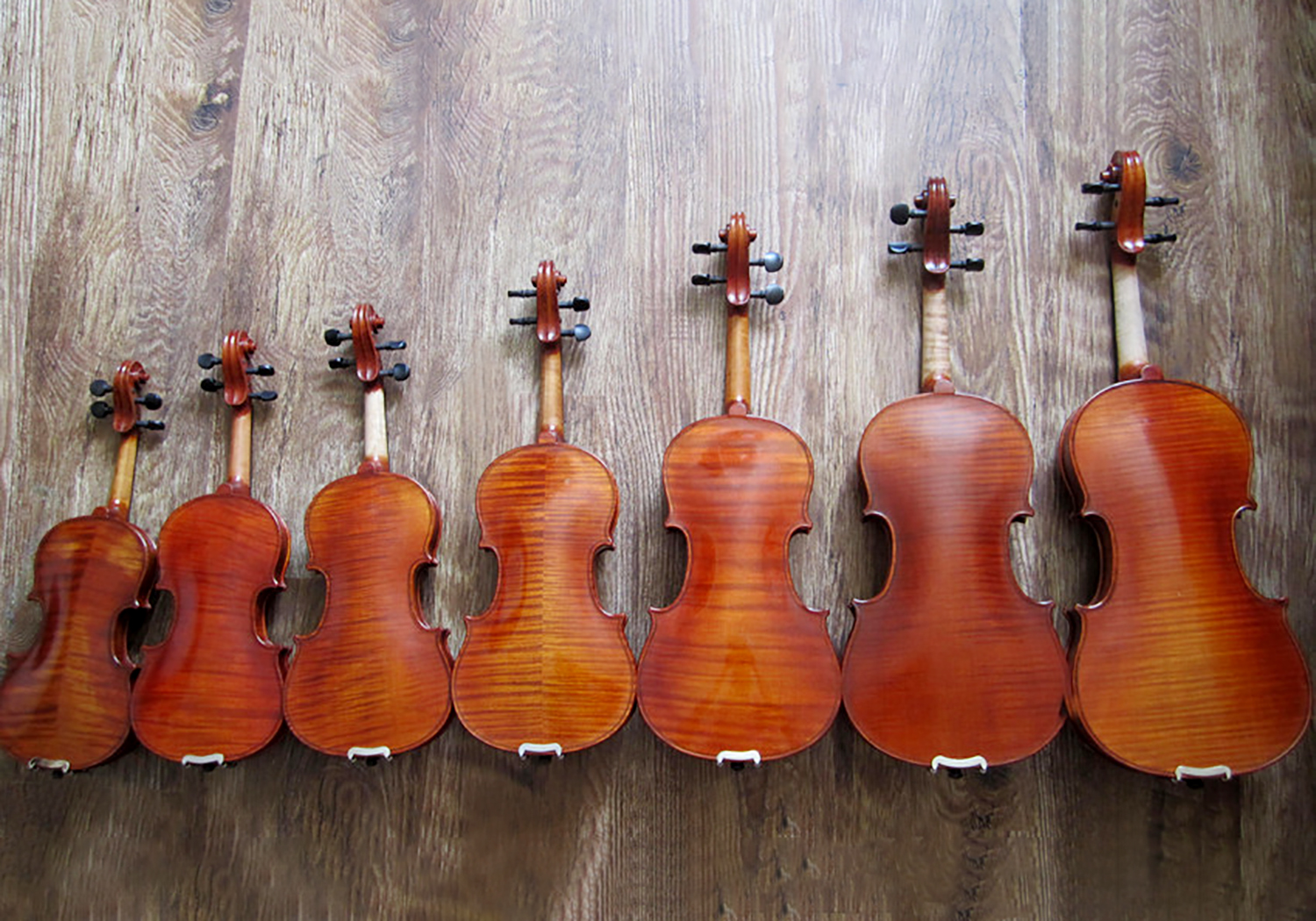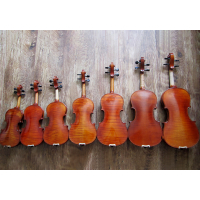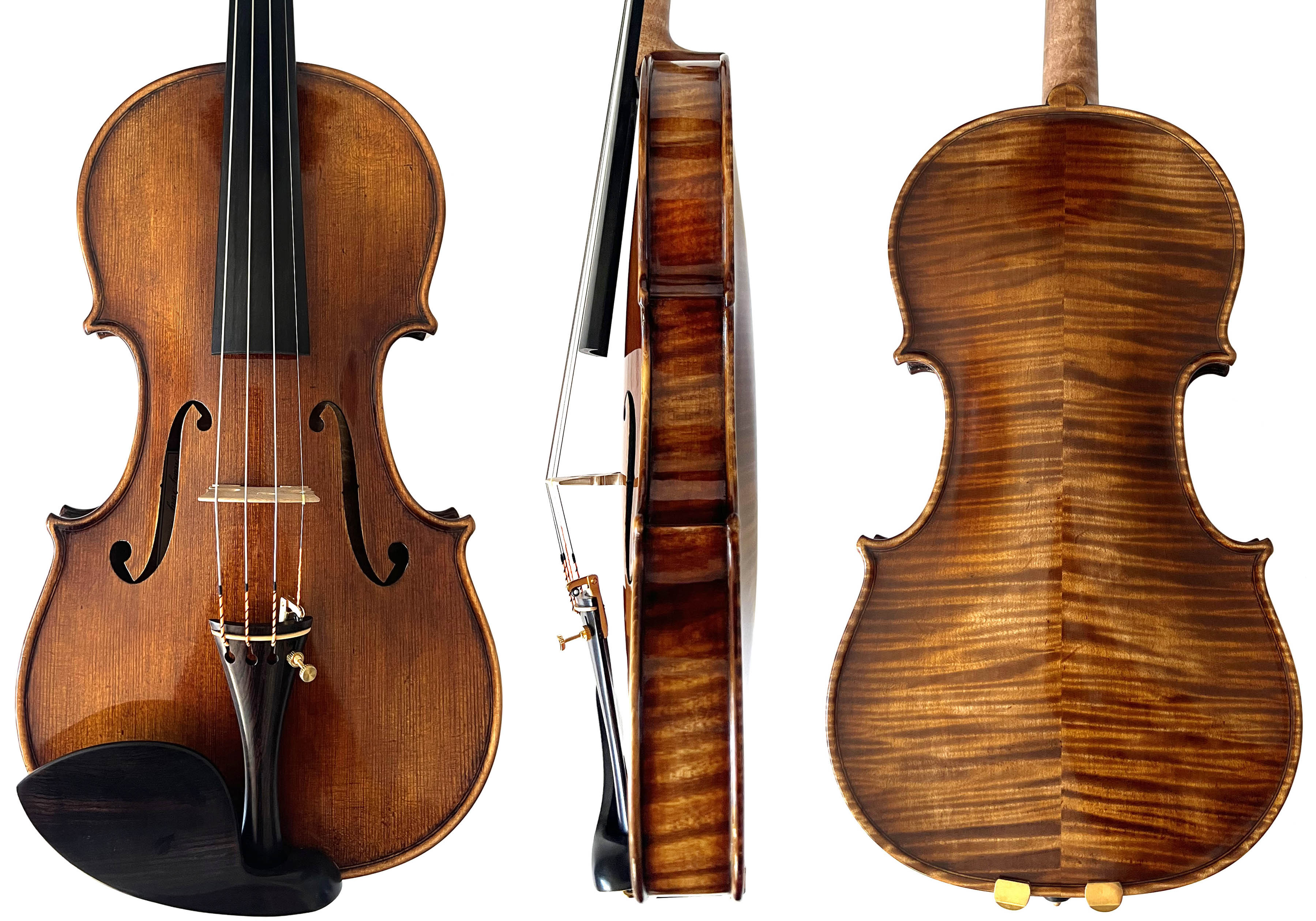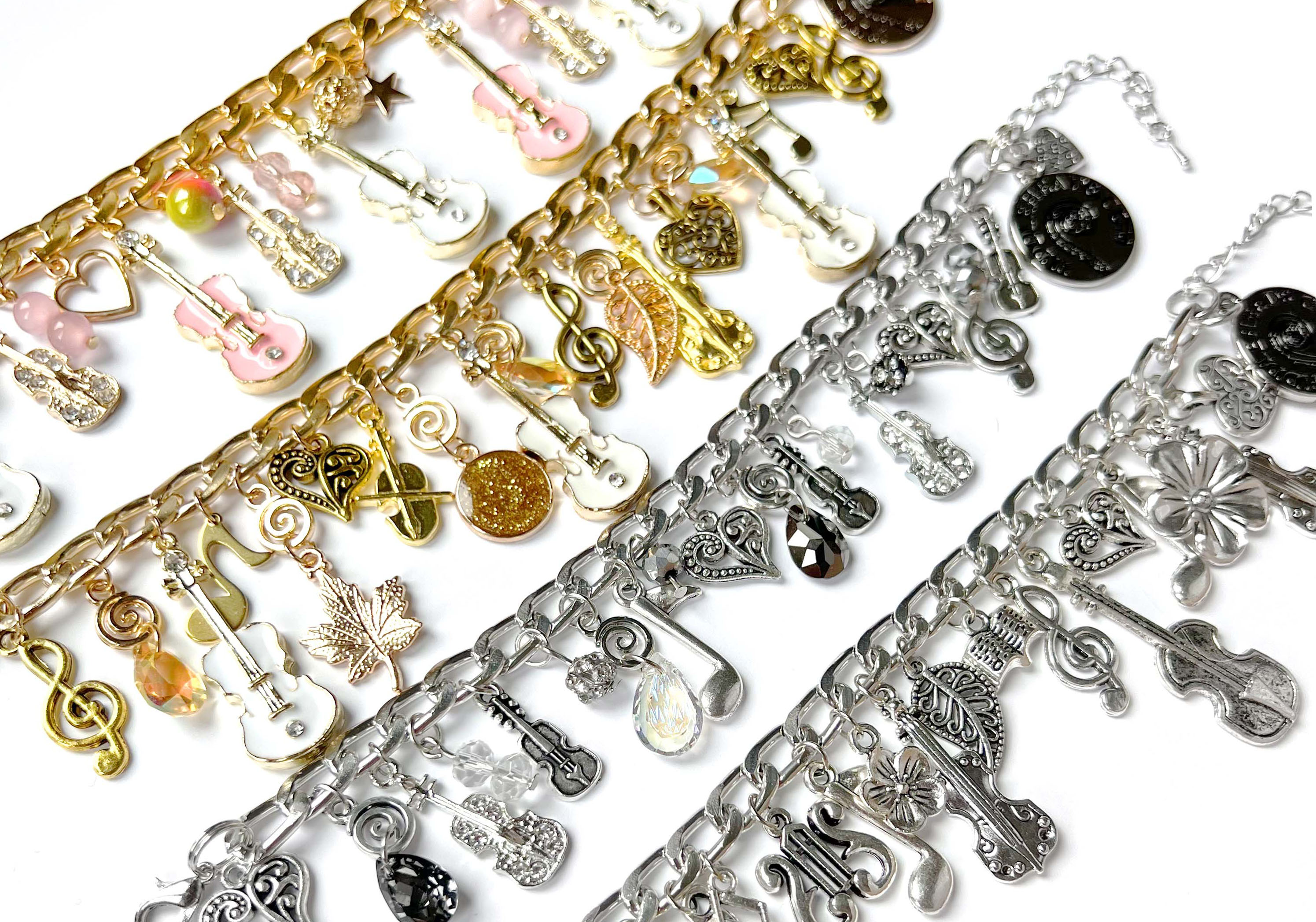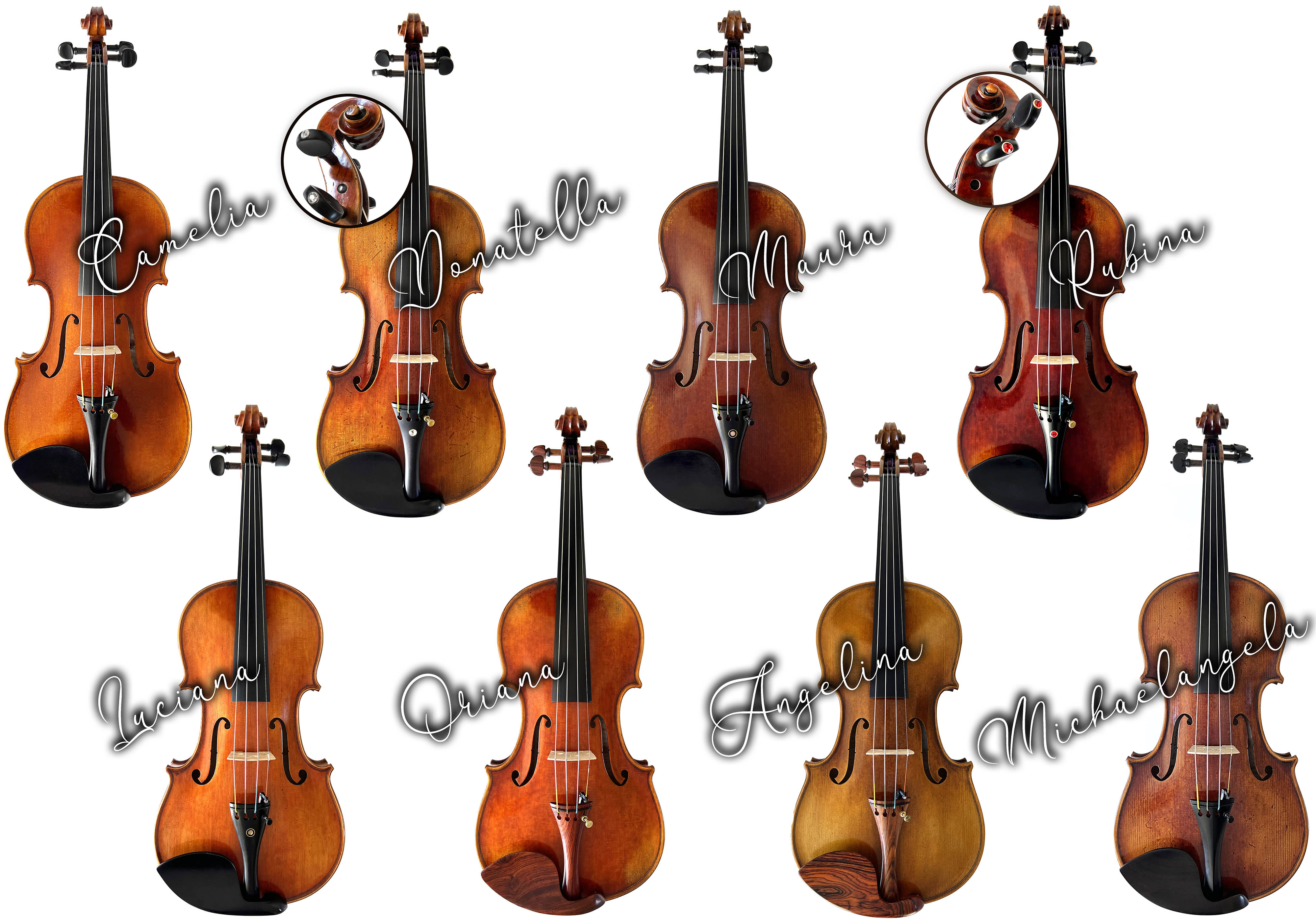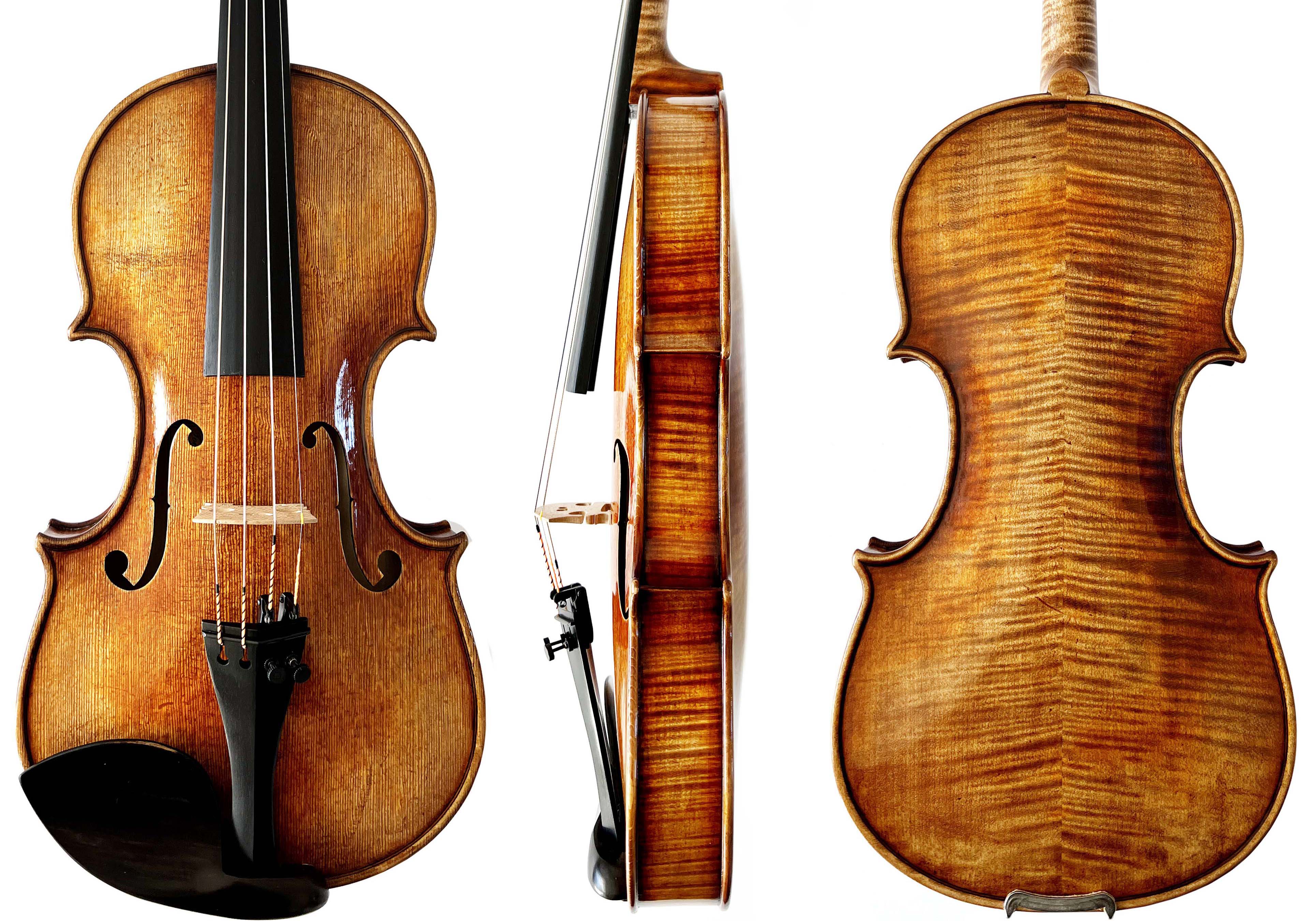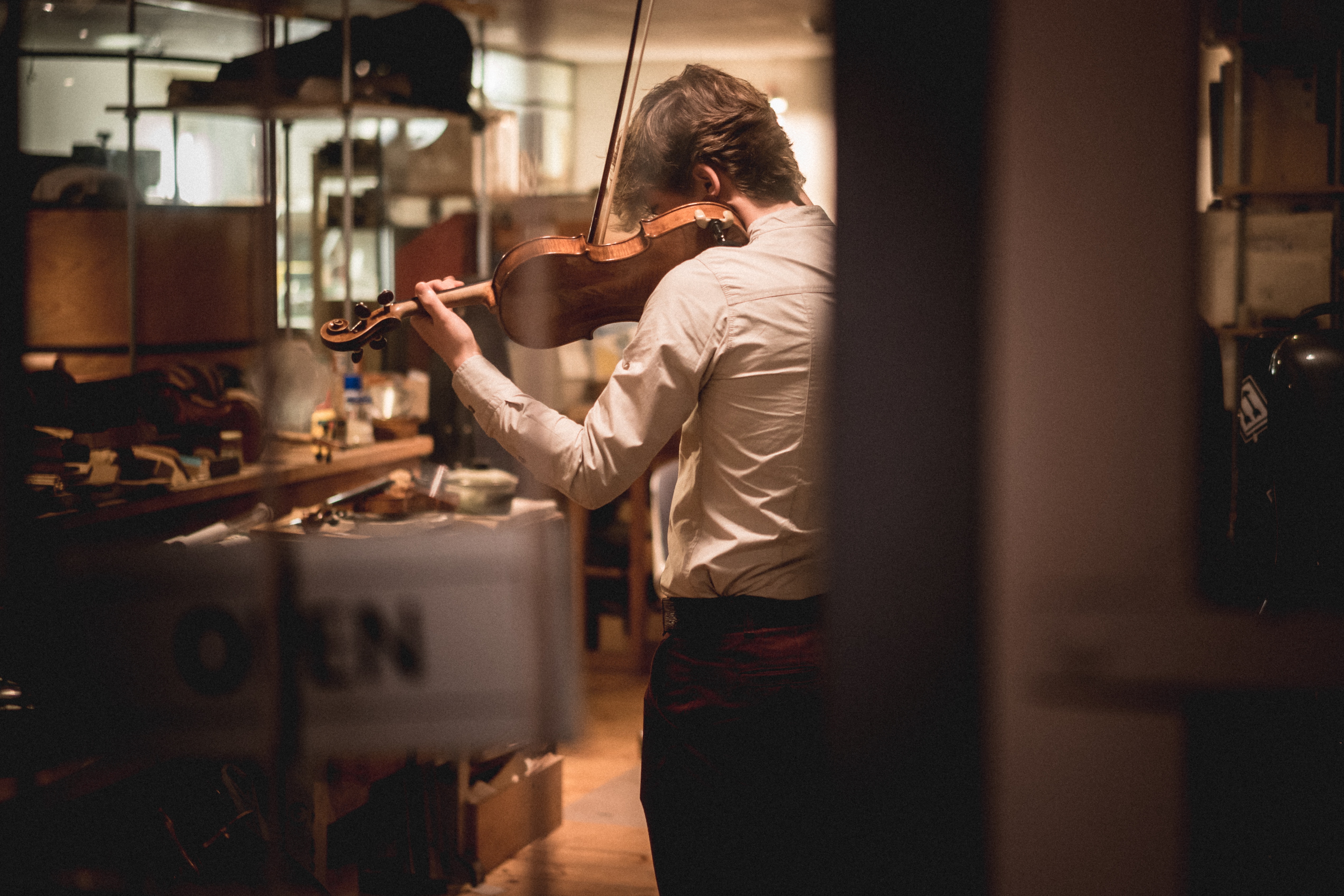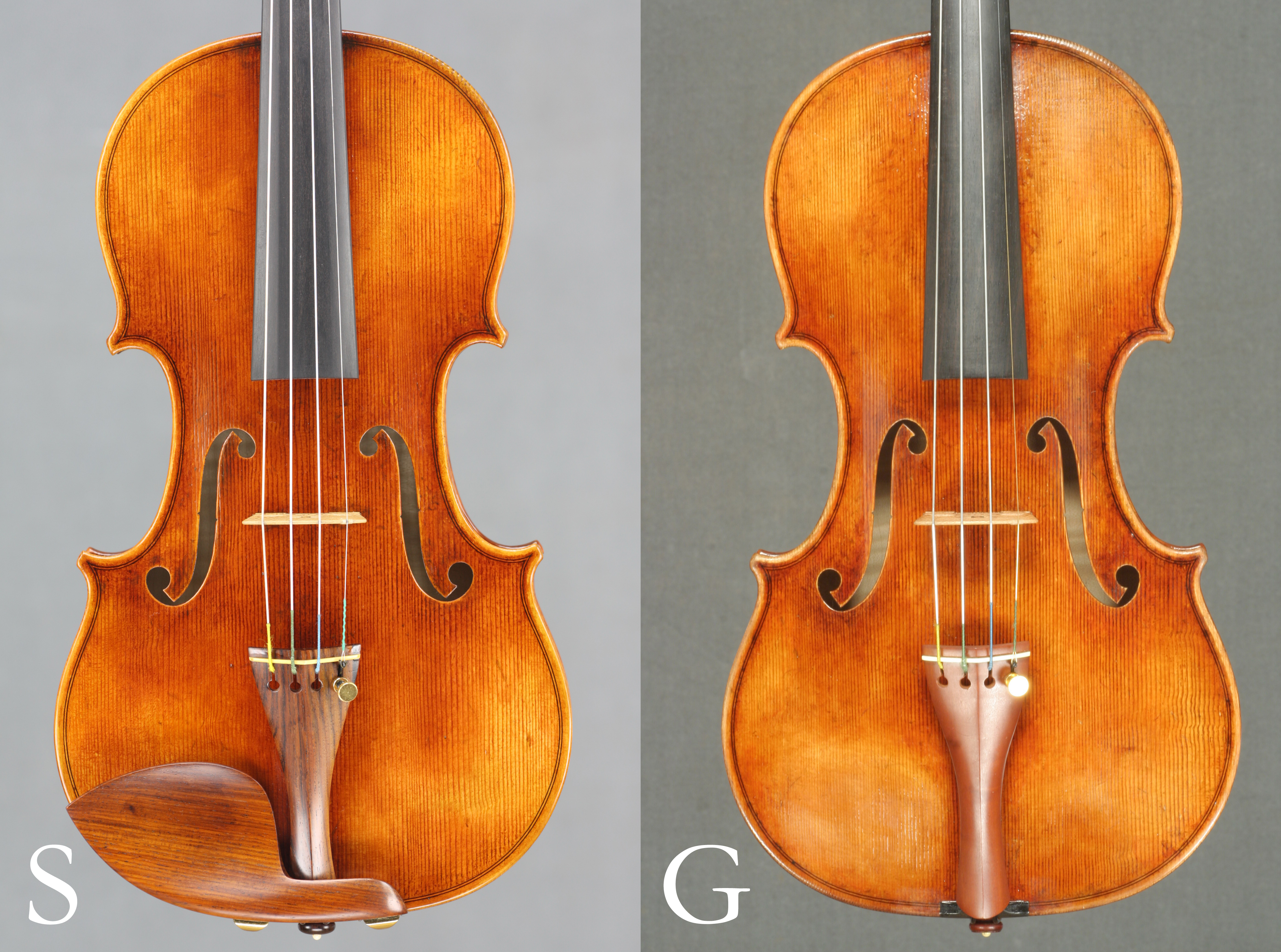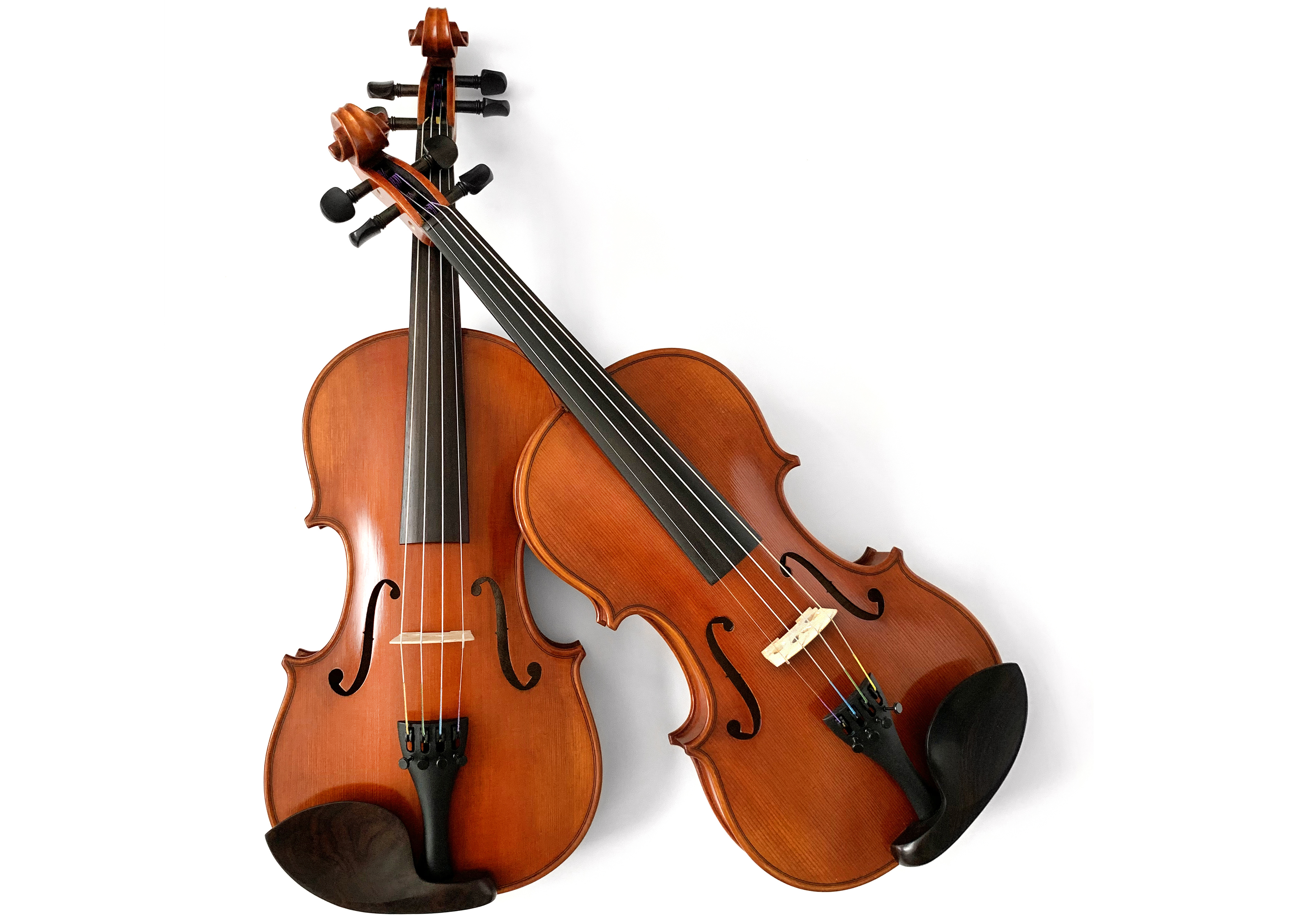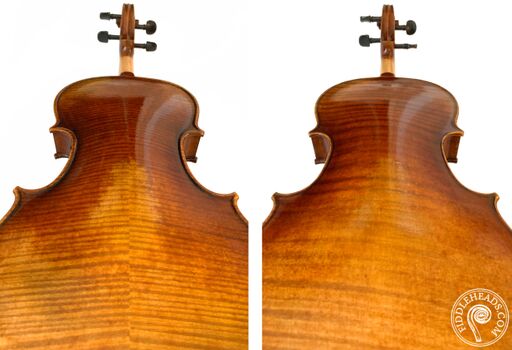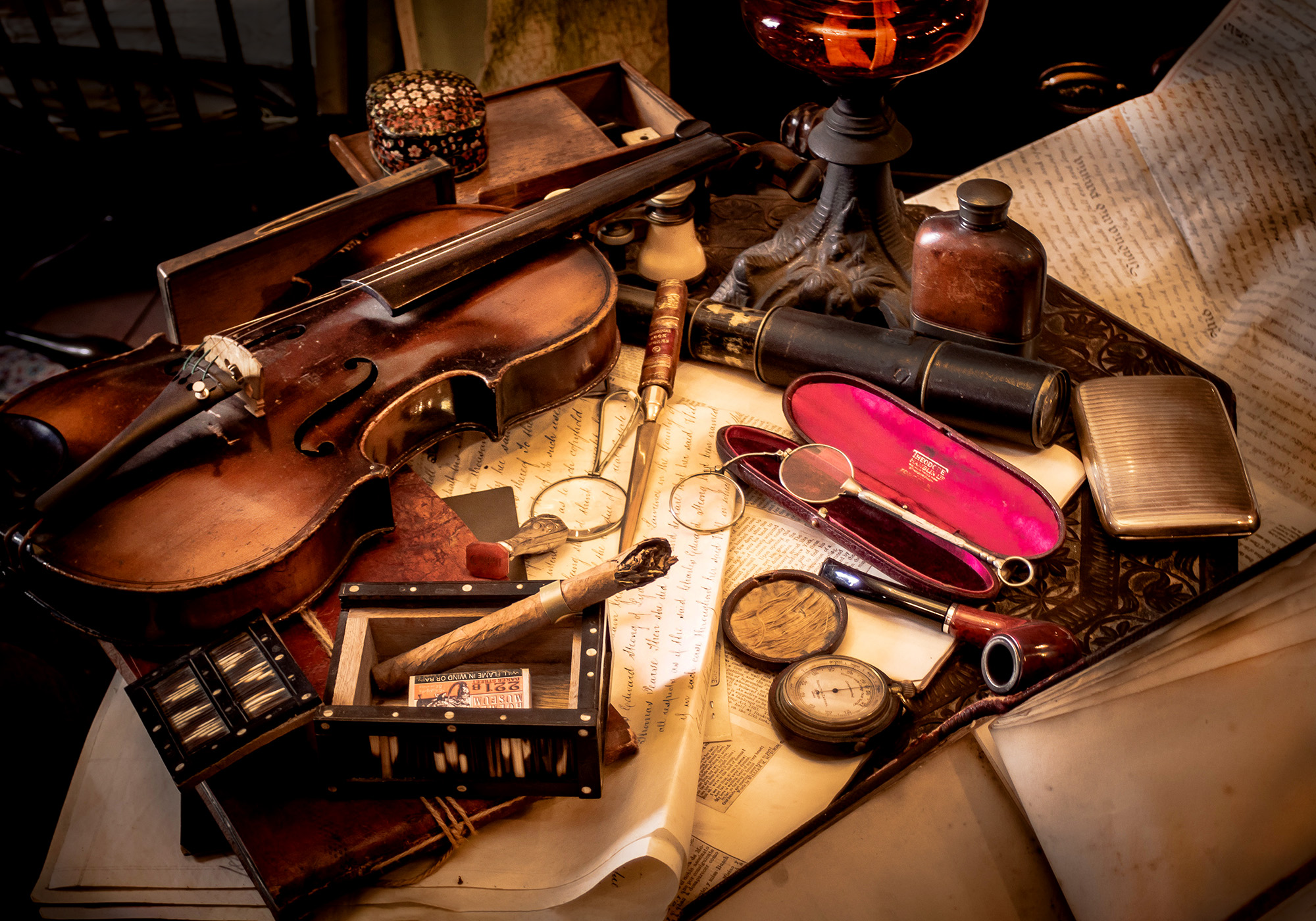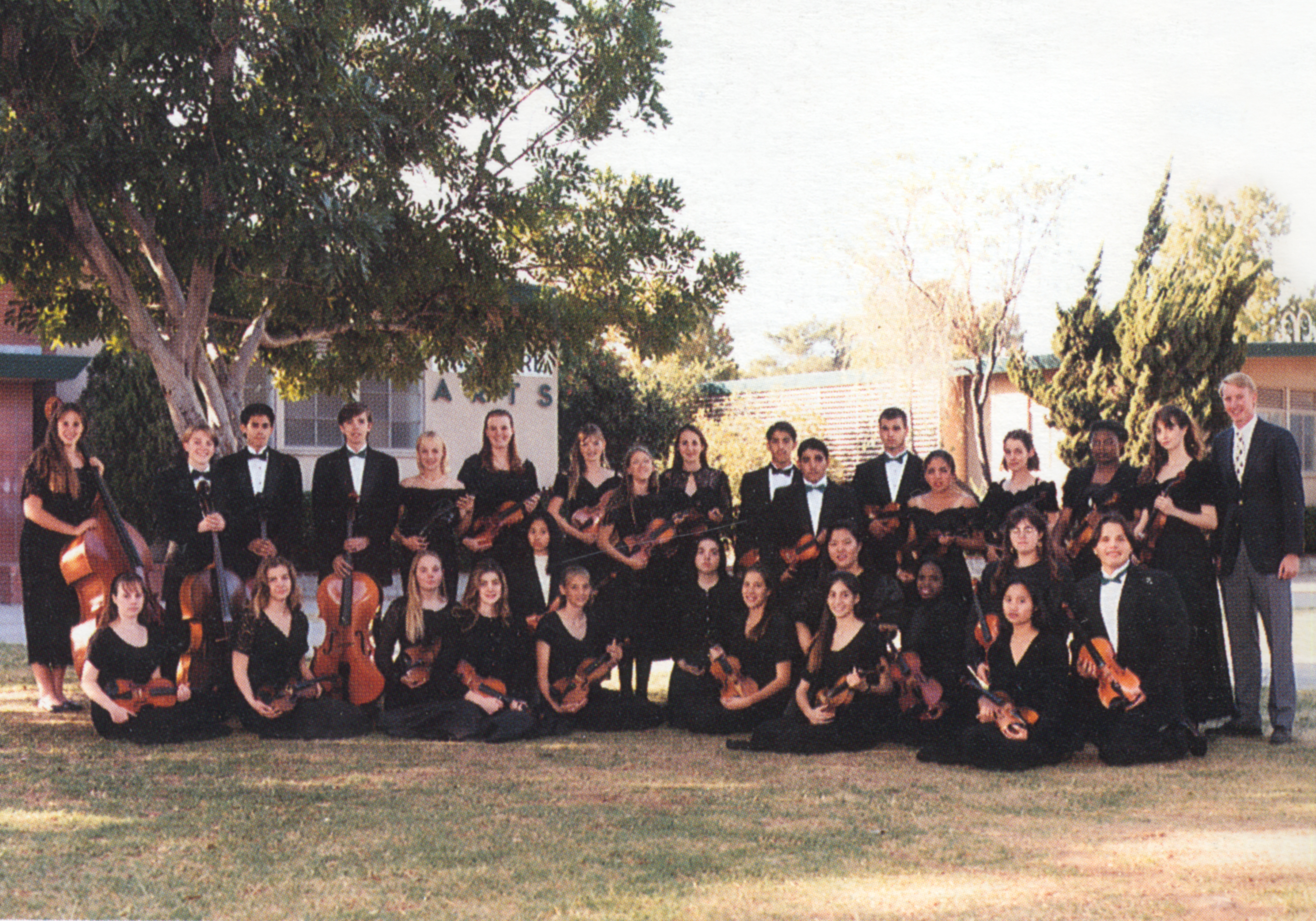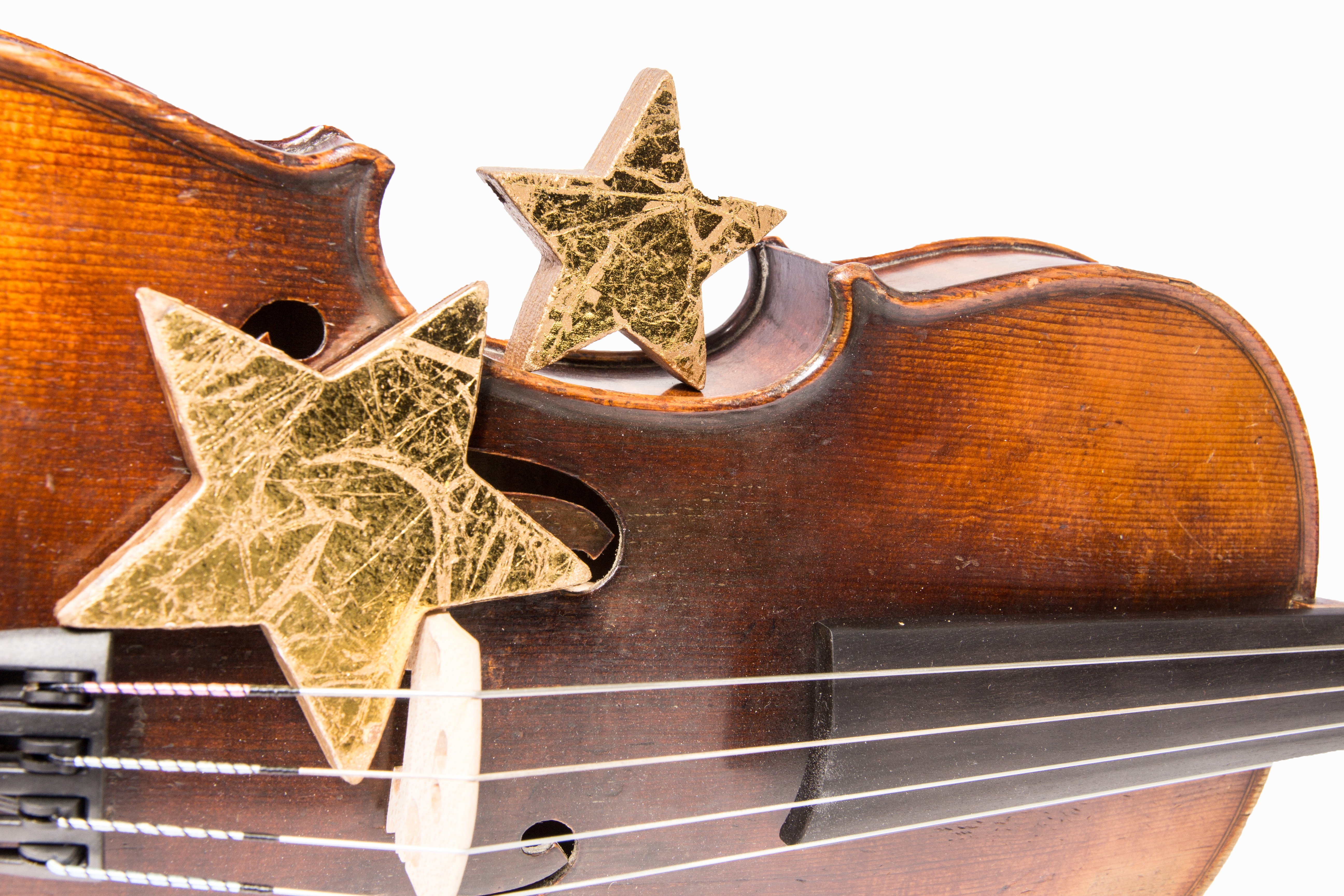Try That Violin on For Size
Try That Violin on For Size
A Violin Teacher Since 1994 Assists Players in Finding the Correct Violin for their Age and Size, Plus a Few other Useful Hints
Violinists are a picky lot.
Prima Donnas for sure.
Not only do we demand bon-bons and fine Italian wine in our dressing rooms, but even student violinists demand an instrument which fits perfectly. Parents don't cough up thousands of dollars only once for their little prodigies, but rather each time the stinker grows out of the instrument.
Okay, maybe it's not a matter of choice for little Mackenzie. She plays an instrument which must be scaled to fit her little arms and fingers as "one size" does not fit all in the violin world. An instrument which is too small or large is be difficult to play and more difficult to listen to for parents. Ill-fitting instruments cannot be played in tune and can harm the young player's growing muscles and tendons.
Yes, parents, you may have to buy up to 5 violins between your child's 5th and 12 birthdays. But with some advice you can perhaps skip sizes to spare yourself all the upgrades.
As a violin shop owner and violin teacher I am contacted throughout the year with sizing requests for violins. I've made up a chart which will help determine the student's proper violin size by their age and measurements.
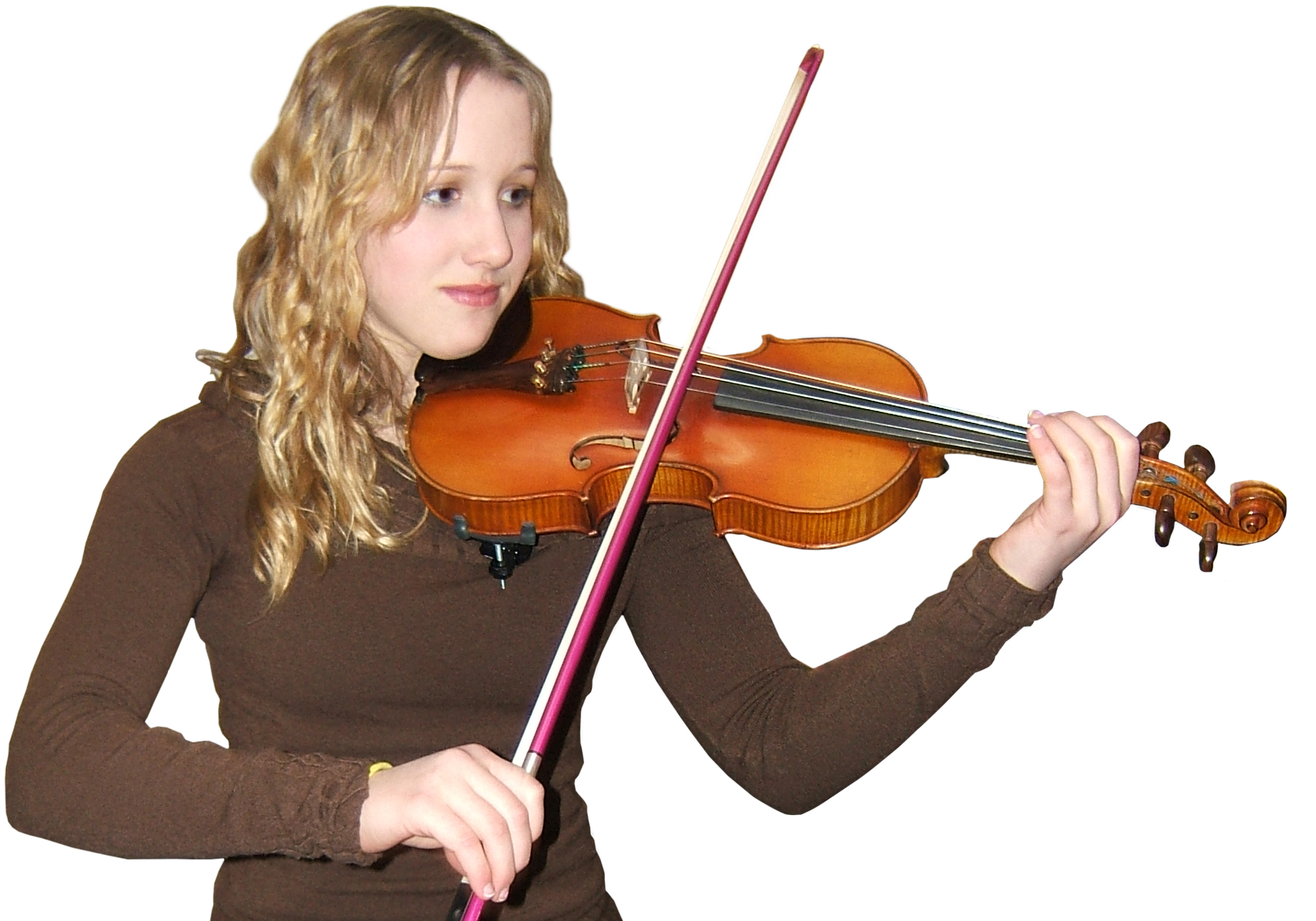
Sizing Based on the Age of the Player- #1
Some children are exceptions to the rule, but my chart provides a general age range for these instruments.
I have instructed 10-year-olds who played full size violins. The most important thing in deciding the correct size is that the student can comfortably play the instrument in tune. 4th finger or pinky intonation may be the deciding factor. If they can reach the pinky note the violin will work just fine.
One student of mine, and not a particularly big child, played a full size starting on her 10th birthday. It looked a bit big against her petite frame, but she could play it in tune and truly appreciated the bigger sound the full size produced over comparably-priced 3/4 violins. She grew into it over the following summer and her parents were glad they didn't buy a 3/4 or else she would have outgrown it in a few months. This spared them having to upgrade twice and got the student a taste for better tone.
All adults use a full size violin, with the exception of very small women who are more the size of a child. These players will sometimes play a 3/4, though they will get a better sound from a 7/8 size violin. The advantage to a 7/8 is a big sound with a smaller scale for playability. 7/8 size violins are more difficult to locate used, however some of the new violins we sell are available in 7/8 size.
Sizing Based on the Player's Arm Length - #2
To accurately discern which size is correct for the player, run a measuring tape from the left side of the player's neck to palm of their outstretched left arm and second time from the neck to the wrist. The arm must not be bent at the elbow and is at a right angle to the body.
Check the measurements on the violin chart above. The neck to palm measurement indicates the largest size that would be appropriate. The neck to wrist measurement provides a comfortable size. As stated in point 1, the most important thing in playing a largish instrument is that the player can comfortably play in tune. Again, 4th finger intonation may be the deciding factor.
Even simpler is to size a violin against the player. Have the young student hold the violin up on the left shoulder and extending out 45 degrees from their side (not in the front, not to the side.) Next, ask the player to reach from under the violin to the scroll (curly end) of the violin with their outstretched left hand, curving the fingers around the scroll from below.
If the left elbow is slightly bent and comfortable the violin is the proper size. If the elbow is straight and/or the player cannot reach the scroll the instrument is too large. Finally, if the elbow is bent at a smaller than 90 degree angle and appears very easy to reach the violin may be too small.
The Violin Sizes - #3
Violins are either "full size" or "fractional". Adults, teens and children age 10-12 play full size. Children play 3/4 and smaller violins depending on their size. The bow used matches the size of the instrument. For example, a 3/4 violin is paired with a 3/4 size violin bow.
Note that Violas are not sized like violins in fractions, rather they are measured by the length of their bodies in inches. For example, a typical sized viola for a student age 12 has a body 15.5" in length and the same sizing rules do not apply as violas are expected to fit a bit big.
Furthermore, viola bows are only available in "full" size. Violists seeking fractional sized bows simply use a violin bow. For example, a 14.5" viola player would use a 3/4 to 4/4 violin bow.
A Violin's Measurements - #4
Instrument measurements vary from maker to maker by as much as 3/4". If you are unsure which sized instrument you have, carefully take two measurements with a tape or string.
1. Measure first the violin the length of the violin from the top of the scroll to the bottom (excluding the end pin at the bottom).
2. Next measure the body from the "shoulders" of the violin to the bottom. Do not include the jutting-out section at the base of the violin's neck in your measurements.
*Note that the width of the violin (measuring the upper or lower "bout") varies widely from maker to maker or style to style. Instruments made in the style of Guarneri tend to have wider lower bouts than Strad models, and thus a bigger volume and depth of tone.
What About Lefties?
Sorry, lefties, but most of your fellows have to conform to play a right-handed violin. You will find the bowing awkward to start; but maybe it's hard even for right-handed players! Violin's not an easy instrument and I don't think right-handed players have any advantage over left-hended players. We just pick our noses with a different finger.
Does the right-handed violin frighten a leftie? Naw, lefties need not worry they can't play the violin! I have taught many lefties and they play the same as everyone else. Then there's Ashley MacIsaac who plays his violin on the other side and the strings end up being backward, but he's an exception to the rule.
Should a lefty player desire a lefty violin, note there are a couple ways to do it:
- As I explained above, some players will take a regular "rightie" violin and hold it "backwards" with the opposite hands for bow and violin. This makes the bow arm high (more gravity/arm weight on it) for the E-string and bow arm low (less gravity/arm weight) for the G-string. This is not ideal as the thicker G-string sounds best with more pressure from the arm and the thin, squeaky E-string is best approached with less weight from the arm. Again, it works great for Ashley but may not be easy for the rest of us who are less naturally gifted!
- Financially-gifted players will have lefty-violins crafted with strings reversed, so they don't run into the problem of using a right-handed violin backwards. The difference is that the inner workings of the violin (sound post, bass bar) as well as the curve of the fingerboard and peg installation are set up properly. (More on these sorts of violins here)
Oversized Violins: Some Suggestions
So your child is growing like a weed and is too big for the 1/4 violin you purchased last year. Should you buy a 1/2 size violin, which would fit now but may be too small in 6 months? Or should you skip to a 3/4 and let him grow into it?
As a teacher I encounter this dilemma frequently and make the decision to skip a size on a case by case basis.
Choosing to use a larger violin can be a wise choice if the student is growing rapidly and if you are paying a bit more to have a better quality, larger violin rather than buying an intermediate violin and replacing it soon after. Rather than buying two cheaper violins one after another, the larger violin would be used longer, thus it would make sense to invest a bit more money into it.
In my time teaching I have had many students skip a size and only once was it not a wise choice. The 10-year-old girl's family had a good line on a nice 3/4 violin, but it was an inch or so too large. Taking her age into consideration, as well as the quality of the instrument in question, we thought it best for her to take the jump. Strangely though the small, young girl did not grow at all for three years!
Now, at 14 years old, the violin fits her perfectly, though most people at this age are in a 4/4. She was just destined to be petite. We realise the jump was not appropriate for her; but how do you know the child will stop growing? Thankfully the girl's mother and I laugh at the situation now and all worry is gone: She plays wonderfullly. If anything, the student really learned to stretch for her 4th finger notes and has excellent intonation!
The important thing with choosing to play an oversized violin is that the student is able to or very close to playing the 4th finger. If she/he can reach this fingering the violin will be usable.
For children skipping a size and playing a slightly large violin you should carefully consider playing a lighter weight violin over a heavy one. Heavier or bulkier violins can be harder to hold up, overextended for long periods of time causing the student to not want to practice for long. A student who has quit never saves the parents money on the violin purchase!
Another suggestion here is to use a shoulder rest to aid in holding a violin which is too large and needs more support.
Welcome to Violin and Enjoy!
Hopefully this advice will help parents with the daunting task of sizing their young players, and maybe even themselves, for a violin. Peruse my articles and FAQs for further help.

